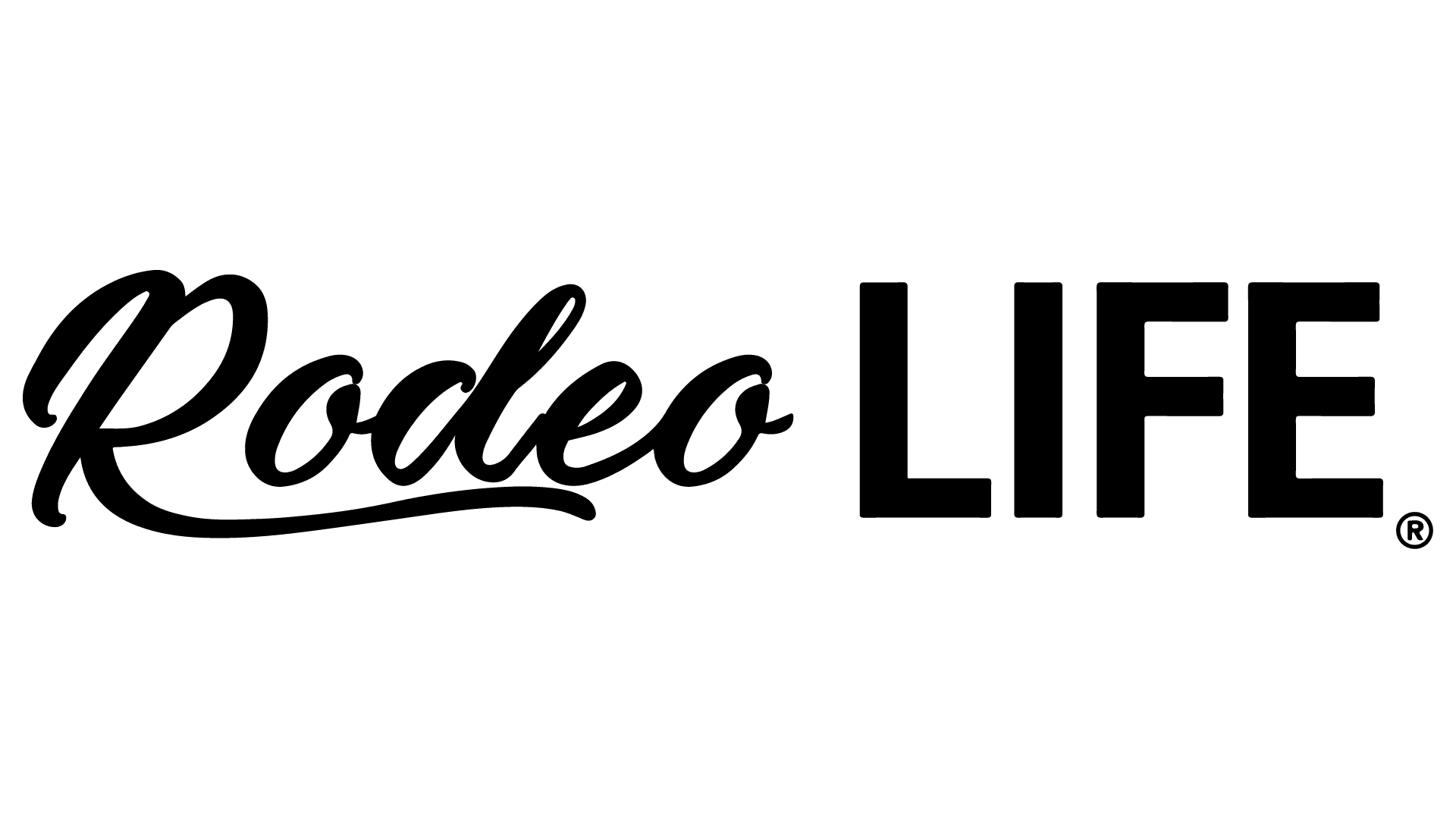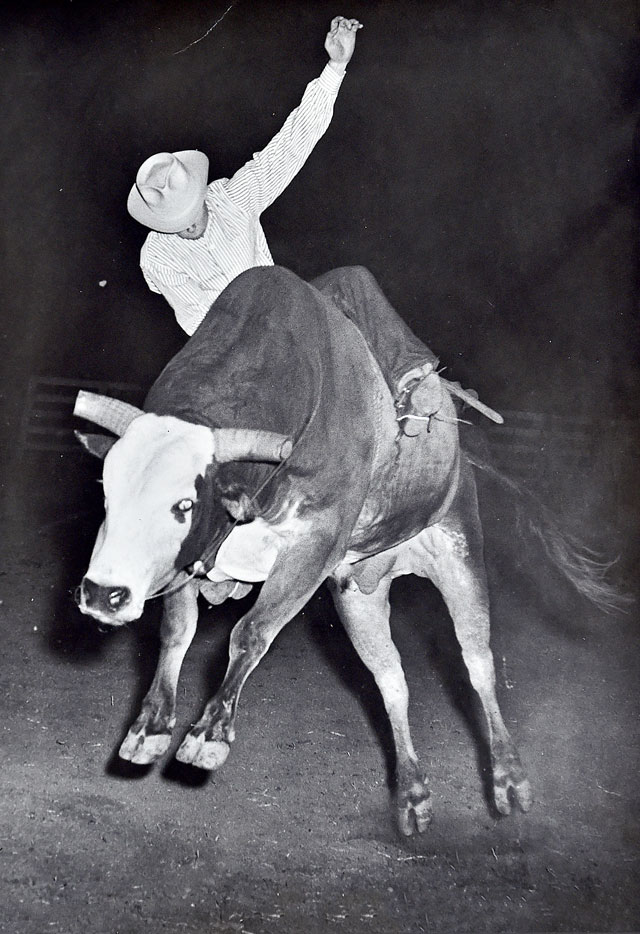Bob Click was never a threat to any big-name cowboys, but he loved to compete. “Jim Shoulders never lost any sleep over me,” Bob quipped, “although I knew him personally and liked him.”
Born the son of O.B. and Thelma Click, on the family farm near Warren, Oregon, just south of St. Helens, Bob rode calves and cows at junior rodeos, helped feed the polled Herefords on the farm, and was derisively nicknamed “Cowboy Bob” by his classmates at school.
He and a buddy, both farm kids, were members of 4-H and FFA and “we were taunted at school,” Bob remembers. “They thought you were a clod and a hick” if a person did 4-H and FFA.
But rodeo remained a constant throughout Bob’s life.
In junior rodeos, he competed in every event, but in high school, it was narrowed to bareback horses and very few bulls, “mostly to please my mother, because she didn’t want me getting on bulls,” Bob remembered. He qualified for the Oregon amateur finals (now the Northwest Pro Rodeo Association) in the bareback riding, and added bull riding to his repertoire.
In 1954, at the age of seventeen, he enlisted in the U.S. Navy. He saw guys, during their leave, who would buy a bottle, sneak it into the movie theater, finish off the bottle and sleep it off, then head back to the boat after leave. That was not for him. “I saw enough of that that I wanted no part of it,” he said. One day, in the paper, he saw a rodeo being advertised in Santa Anna, Calif., so he got a Greyhound bus ticket, headed to Santa Anna, and watched the rodeo.
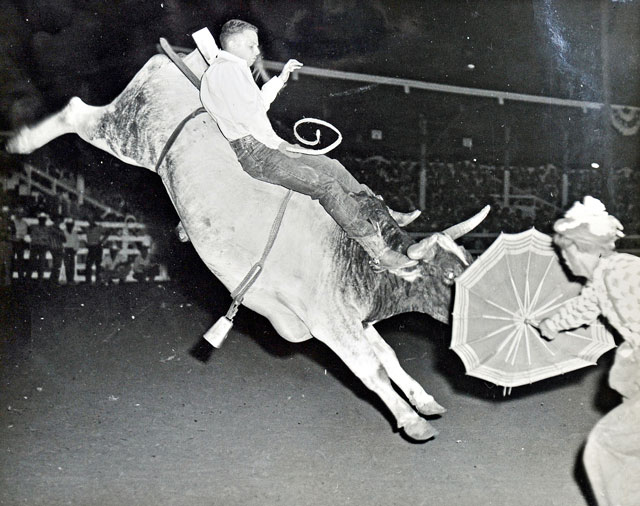
The bucking bulls didn’t look any tougher than what he’d ridden back at home. “I looked at the stock, and it didn’t look any worse than what I was getting on at amateur rodeos,” Bob said.
At the time, the Rodeo Cowboys Association, the predecessor to the PRCA, was allowing those serving in the military to compete without having a card, so Bob went for it.
And any time he had “liberty,” or leave, he was at a rodeo. “I had a 72 hour pass every weekend,” he said. Stationed at Mare Island Naval Ship Yard in Vallejo, Calif., northern California was full of rodeos in the summertime. “I was at a rodeo every weekend, sometimes two a weekend.”
In 1957, before Bob left the Navy, he bought his RCA card. Stationed in an active submarine, he made port in Japan, and mailed his membership fees to Denver, so he could compete at the Cow Palace in San Francisco, Calif.
After the Navy, he got a job at the phone company and continued to ride bulls. He wasn’t the best bull rider around, but that didn’t bother him. “I was getting bucked off bulls all the time, but I didn’t care,” he said. “I loved being there, being part of it.”
He’d come to work with the typical bull riding injuries, and be put on “light duty.” After a six month probation, workers couldn’t be fired, so he knew that wasn’t an issue. But one day, his supervisor pulled him aside. “You’re a hard worker,” he told Bob, “when you can work, and we love your rodeo stories. But you can’t make a career out of light duty.” Bob told him he’d take his words under advisement.
Not long after that, in 1963, Bob was in a bad car wreck, breaking vertebrae, and his bull riding days were over.
After he healed, he did some scuba instructing. He had learned to scuba dive in the Navy for submarine escape training and took instruction on shooting a camera underwater. His parents had given him a Brownie Kodak camera for eighth grade graduation, and he enjoyed taking pictures. This knowledge would come in handy down the road.
Married to his first wife Beverly in 1958, she loved rodeo as much as he did, and even after he got hurt, they would attend rodeos. But it was hard to buy a ticket and sit in the grandstand when he was used to being behind the chutes.
One year, the county fair was happening in Vancouver, Wash., and Bob noticed there was a bull-a-rama. He bought a ticket, grabbed his camera, and took a few pictures.
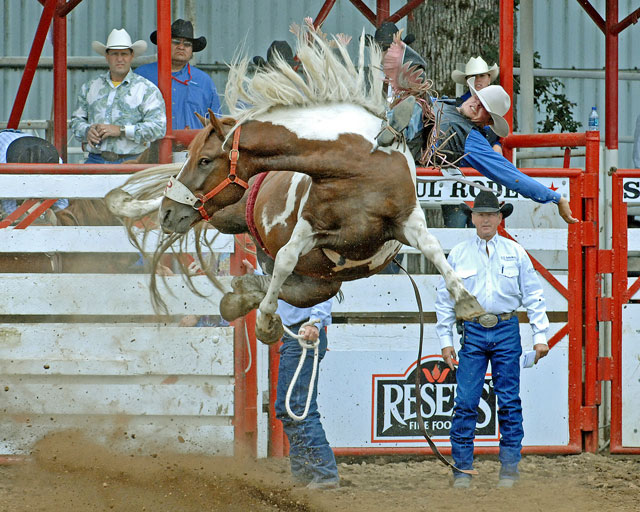
The next week, at a rodeo in Longview, Wash., he took his developed pictures from the prior week and went behind the chutes. Ron Hall, a bull rider whose dad, Tom Hall, had been one of Bob’s rodeo peers, grabbed his buddies and said, “come look at this guy’s pictures,” Bob said. “I had printed eight by tens, and they bought them all immediately. I was hooked then,” he remembered.
Bob also helped his friend, Jim Smith, a tie-down roper, with a roping jackpot he produced near Molalla. Bob was the chute boss, but he brought his camera along and took pictures. The cowboys “loved having pictures of themselves,” he remembered.
His underwater photography learning came in handy. “I learned the basics of photography from my underwater photography,” Bob said. “That helped more than anything.” The use of a strobe light in dark settings, like underwater, was similar to the use of a strobe shooting rodeo pictures after the sun went down.
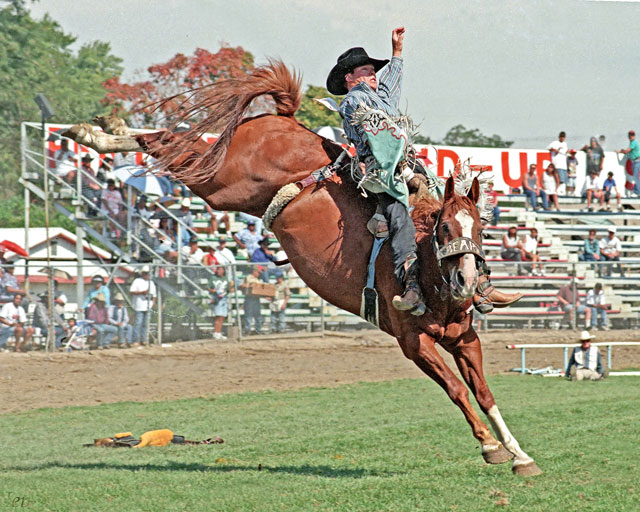
His hobby grew. It was the early 1990s and he was still working for the phone company, and taking rodeo pictures in the evenings and weekends. At the time, there were six rodeos in the Portland area that he could work and still be home every night.
Being adept at photography and understanding rodeo didn’t necessarily mean that rodeo photography was easy, he said. “I had a lot of rodeo experience and a lot of photo experience but I did not have rodeo photography experience,” he said. “I had to learn it.”
One of the people who helped him was Fred Nyulassy, also a rodeo photographer. “I was very fortunate to meet a nice guy,” Bob said. The two were Navy veterans, and they hit it off. “He is one of the best.”
Bob also worked for three different news services, providing rodeo photos for them. The East Oregonian (Pendleton, Ore.), the Bend (Ore.) Bulletin, and the Spokane (Wash.) Spokesman-Review used his photos and loved them.
Before he retired from the phone company, Bob worked as many as twenty rodeos a year, including the National Finals Rodeo, which he photographed for eighteen years.
He retired from the phone company in 2003, and by this time, he had remarried. Jean, his second wife, had helped care for his three kids while Bob was on the road doing construction for the phone company. They became close, and married in 1963.
In 2013, while he was shooting the National Finals, he got a call as he traveled home. Jean had died in her sleep. He had adopted her daughter, Michelle, who is handicapped and lives with Bob. The next year was his last one to work the National Finals; he couldn’t be gone from Michelle, who needs him at home.
Now retired, he takes photos at about a dozen rodeos a year: Red Bluff and Redding Calif.; Sisters, St. Paul, Hermiston, Canby and Pendleton, Ore.; and Bremerton and Ellensburg, Wash.
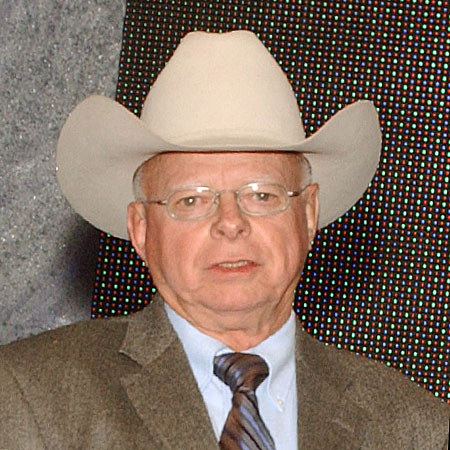
Rodeo photography has changed since he started snapping pictures at the bull-a-rama in Washington. The technology has advanced, Bob said. “When I started, everyone shot film. It has improved so much, and it’s so much easier to do than when I started.” One of his photographer heroes is Devere Helfrich, who shot rodeo pictures from the 1940s through the 70s. “I didn’t realize, when I was riding, how good Devere was. He didn’t have the great cameras they have now, and all the support, like Photoshop. Photography has changed dramatically in a twenty-five year period. Frankly, it’s not that hard to do anymore.”
And it will require fewer skills to be a photographer in the future, Bob believes. Cell phone cameras have improved, and he foresees the day when high quality still shots can be pulled out of video.
When he was riding bulls, he dreamed of the day his picture might be in the Western Horseman. He did have pictures in the magazine, but they were taken by him, not of him.
Bob is the 2010 PRCA Media Award for Excellence in Rodeo Photography winner.
But it’s not the awards and honors that satisfy him. It’s the friends he’s made.
“It’s like you’re all one family,” he said. “We’re not blood related but we’re still family to each other.”
Rodeo is one of the best parts of his life, he said. “All the unhappiness you see,” in the world, is forgotten when a person attends a rodeo. “With rodeo, for the most part, you get away from it. Rodeo people care about each other.”
